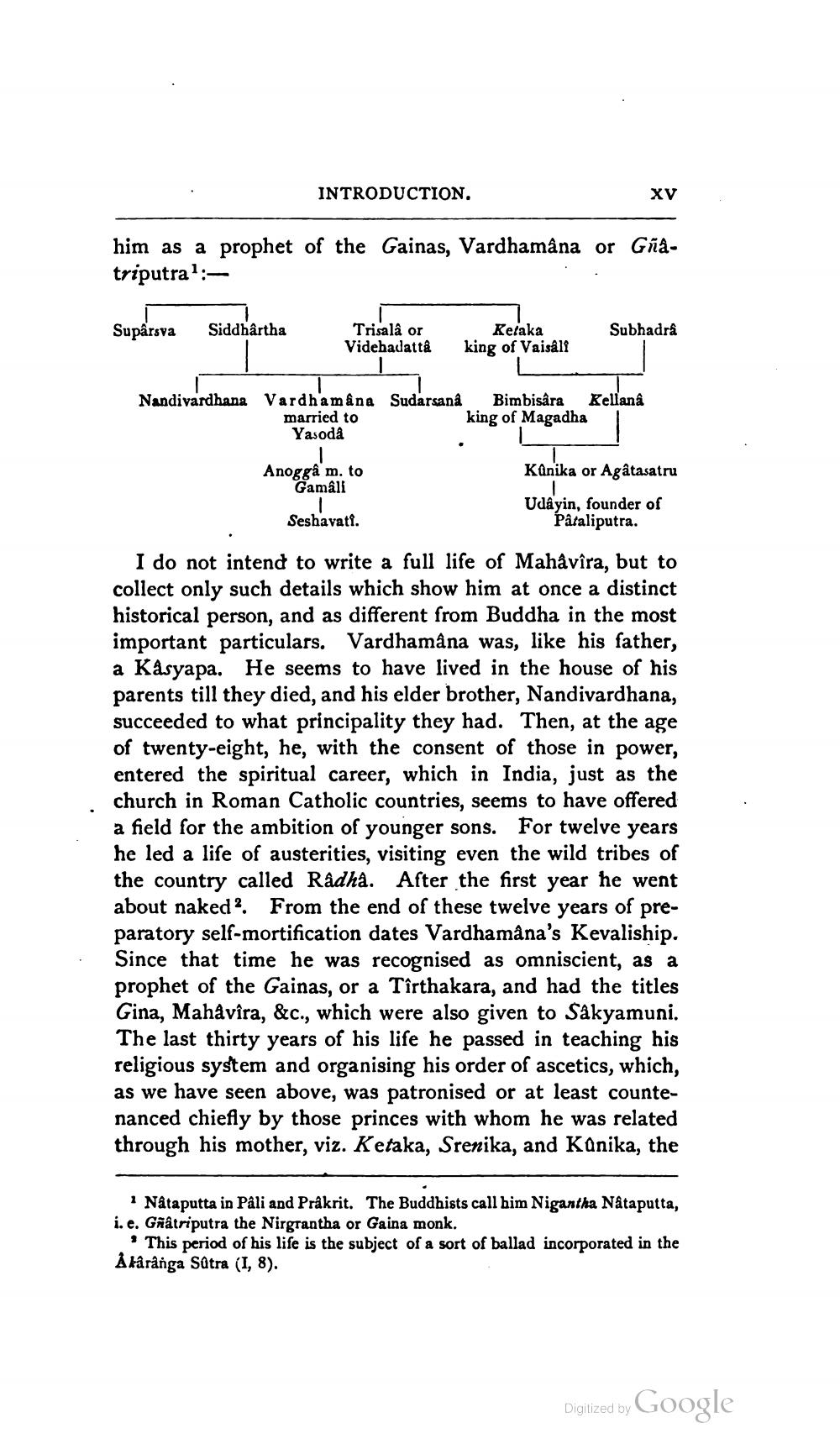________________
INTRODUCTION.
ху
him as a prophet of the Gainas, Vardhamâna or Gñatriputra':
Supârsva
Siddhartha
Subhadra
Trisalâ or Videbadatta
Kelaka king of Vaisalt
Nandivardhana Vardhamana Sudarsana Bimbisåra Kellana married to
king of Magadha Yasoda
king of Magadha
Anoggâ m. to
Gamali
Kanika or Agatasatru
Udayin, founder of
Paraliputra.
Seshavati.
I do not intend to write a full life of Mahâvîra, but to collect only such details which show him at once a distinct historical person, and as different from Buddha in the most important particulars. Vardhamana was, like his father, a Kasyapa. He seems to have lived in the house of his parents till they died, and his elder brother, Nandivardhana, succeeded to what principality they had. Then, at the age of twenty-eight, he, with the consent of those in power, entered the spiritual career, which in India, just as the church in Roman Catholic countries, seems to have offered a field for the ambition of younger sons. For twelve years he led a life of austerities, visiting even the wild tribes of the country called Rådhà. After the first year he went about naked? From the end of these twelve years of preparatory self-mortification dates Vardhamâna's Kevaliship. Since that time he was recognised as omniscient, as a prophet of the Gainas, or a Tîrthakara, and had the titles Gina, Mahâvîra, &c., which were also given to Sakyamuni. The last thirty years of his life he passed in teaching his religious system and organising his order of ascetics, which, as we have seen above, was patronised or at least countenanced chiefly by those princes with whom he was related through his mother, viz. Ketaka, Srenika, and Kanika, the
· Nâtaputta in Pâli and Prakrit. The Buddhists call him Nigantha Nataputta, i.e. Grâtriputra the Nirgrantha or Gaina monk.
* This period of his life is the subject of a sort of ballad incorporated in the Å kârånga Sätra (I, 8).
Digitized by Google




